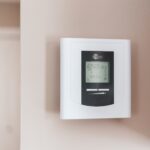Smart utility management is a way to improve the efficiency of your home, reducing your energy use and saving you money. It also helps the environment by lowering carbon footprint and procuring more renewable energy.
Utilities use smart devices and software applications to monitor, report and manage energy consumption. These tools help them respond to changes in demand, ensuring they provide reliable service.
Contents
Invest in a Smart Thermostat
A smart utility thermostat is one of the easiest ways to maximize energy efficiency. It helps you save money and energy by learning from your habits, adjusting temperatures to save energy when you are away, and even letting you know when the power goes out.
In fact, according to the Environmental Protection Agency, a smart thermostat can help you save an average of 8 percent on your energy bills. These savings can be significant, especially if you live in an area with brutal winters and hot summers.
Thermostats come in various models, most of which feature a combination of learning technology, geofencing, motion sensing, and energy data analytics. Some even offer voice command capabilities to control your temperature with your smartphone while at work or on vacation.
Turn Down the Heat
Knowing when to turn down the heat is essential whether you live in an apartment or own your home. Depending on your lifestyle, you can lower your thermostat by 6 to 8 degrees at night and while at work, reducing fuel consumption and heating bills.
Smart power strips can also shut off appliances’ electricity supplies when users are asleep or reaching full charge, cutting energy pull throughout the day. Devices that consume the most power include smartphones, laptops, microwaves, and coffee makers.
Many utilities offer incentives for homeowners to sign up for “smart metering” programs, which monitor their electrical use. These programs help utility companies manage their grid and avoid blackouts during extreme weather.
Replace Old Light Bulbs
If you have old light bulbs in your home that are not energy efficient, it’s time to replace them. It can maximize energy efficiency and reduce your overall power costs.
It’s essential to understand the difference between different types of light bulbs. Generally, a more efficient bulb uses less energy than an inefficient one and lasts longer.
Another good way to save money is to look for a bulb that has earned the Energy Star certification. These are more efficient and have higher brightness ratings.
In addition to saving money, you’ll also reduce greenhouse gas emissions. It can be essential for those living in areas susceptible to climate change.
Install Occupant Sensors
Using occupancy sensors to control building lights is a great way to maximize energy efficiency. In fact, according to a study by the EPA, these devices can reduce energy waste by up to 68% and improve energy savings by up to 60%.
Occupancy sensors turn lights on automatically when people enter a room and off when they leave. It provides convenience and helps ensure security.
Some sensors also feature a built-in photocell that senses the amount of daylight in a room and only activates connected lighting when natural light is present.
These are great options for intermittently used spaces, like stairwells, breakrooms, conference rooms, and restrooms. However, they are not cost-effective for office spaces that remain occupied all day.
Install a Water Heater Saver
Water and heating are among the most overlooked areas in the home where energy costs can skyrocket. Your water heater alone accounts for nearly 20% of your energy bill!
You can save a significant amount of energy and money by simply turning down your hot water temperature. By doing this, you may notice the cost reductions for years, which only takes a few seconds.
Smart appliances and devices are a great way to reduce energy usage. However, ensuring you buy the right product for your needs is essential.
Install a Solar Panel
Solar panels are a significant investment. The sooner you switch, the less you’ll pay electricity bills. However, before deciding, it’s essential to do your research and understand your energy needs.
The number of panels you need depends on your hourly energy usage and the sunlight available in your area. To determine this, multiply your home’s hourly energy usage by your area’s average peak sunlight hours.
Once your system is installed, you’ll need to connect it to your utility and generate clean electricity for your home. It can take a little time, but the process is relatively straightforward.




